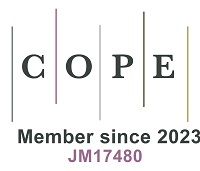REFERENCES
1. Xu X, Sharma P, Shu S, et al. Global greenhouse gas emissions from animal-based foods are twice those of plant-based foods. Nat Food 2021;2:724-32.
2. Tubiello FN, Karl K, Flammini A, et al. Pre- and post-production processes increasingly dominate greenhouse gas emissions from agri-food systems. Earth Syst Sci Data 2022;14:1795-809.
3. Crippa M, Solazzo E, Guizzardi D, Monforti-Ferrario F, Tubiello FN, Leip A. Food systems are responsible for a third of global anthropogenic GHG emissions. Nat Food 2021;2:198-209.
4. Colomb V, Touchemoulin O, Bockel L, et al. Selection of appropriate calculators for landscape-scale greenhouse gas assessment for agriculture and forestry. Environ Res Lett 2013;8:015029.
5. Zhu B, Kros J, Lesschen JP, Staritsky IG, de Vries W. Assessment of uncertainties in greenhouse gas emission profiles of livestock sectors in Africa, Latin America and Europe. Reg Environ Change 2016;16:1571-82.
6. Frey C, Penman J, Hanle L, Monni S, Ogle S. 2006 IPCC Guidelines for National Greenhouse Gas Inventories - Volume 1, Chapter 3 - Uncertainties. IPCC; 2006. Available from: https://www.ipcc-nggip.iges.or.jp/public/2006gl/pdf/1_Volume1/V1_3_Ch3_Uncertainties.pdf [Last accessed on 5 Sep 2022].
7. Nabuurs G-J, Mrabet R, Abu Hatab A, et al. Agriculture, Forestry and Other Land Uses (AFOLU). In: Shukla PR, Skea J, Slade R, Al Khourdajie A, van Diemen R, et al., editors. Climate Change 2022: Mitigation of Climate Change. Contribution of Working Group III to the Sixth Assessment Report of the Intergovernmental Panel on Climate Change. Cambridge, UK and New York, USA: Cambridge University Press; 2022. Available from: https://www.ipcc.ch/report/ar6/wg3/ [Last accessed on 5 Sep 2022].
8. Lamb WF, Wiedmann T, Pongratz J, et al. A review of trends and drivers of greenhouse gas emissions by sector from 1990 to 2018. Environ Res Lett 2021;16:073005.
9. Government of the Republic of Kenya. Kenya Climate Smart Agriculture Strategy-2017-2026. Nairobi, Kenya: 2017. Available from: https://www.adaptation-undp.org/sites/default/files/resources/kenya_climate_smart_agriculture_strategy.pdf [Last accessed on 5 Sep 2022].
10. Makoni N, Mwai R, Redda T, van der Zijpp A, van der Lee J. White gold: opportunities for dairy sector development collaboration in East Africa. Wageningen, The Netherlands: Centre for Development Innovation, Wageningen UR, 2014. Available from: https://library.wur.nl/WebQuery/wurpubs/reports/454917 [Last accessed on 5 Sep 2022].
11. Enahoro D, Lannerstad M, Pfeifer C, Dominguez-Salas P. Contributions of livestock-derived foods to nutrient supply under changing demand in low- and middle-income countries. Global Food Security 2018;19:1-10.
12. Bateki CA, van Dijk S, Wilkes A, Dickhoefer U, White R. Meta-analysis of the effects of on-farm management strategies on milk yields of dairy cattle on smallholder farms in the Tropics. Animal 2020;14:2619-27.
13. FAO, ILRI. Smallholder dairy methodology - draft methodology for quantification of ghg emission reductions from improved management in smallholder dairy production systems using a standardized baseline. Food and Agriculture Organization of the United Nations (FAO) & International Livestock Research Institute (ILRI); 2017. Available from: https://www.goldstandard.org/sites/default/files/documents/gs_dairy_methodology.pdf [Last accessed on 5 Sep 2022].
14. Tricarico JM, Kebreab E, Wattiaux MA. MILK symposium review: sustainability of dairy production and consumption in low-income countries with emphasis on productivity and environmental impact. J Dairy Sci 2020;103:9791-802.
15. Herrero M, Grace D, Njuki J, et al. The roles of livestock in developing countries. Animal 2013;7 Suppl 1:3-18.
16. UNFCCC. Standardized baselines under the Clean Development Mechanism (capitalize). United Nations Framework Convention on Climate Change (UNFCCC); 2010. Available from: http://unfccc.int/resource/docs/2010/tp/04.pdf [Last accessed on 5 Sep 2022].
17. Haya B, Cullenward D, Strong AL, et al. Managing uncertainty in carbon offsets: insights from California’s standardized approach Clim Policy 2020. pp. 1112-26.
18. Dong H, Mangino J, McAllister T, et al. IPCC guidelines for national greenhouse gas inventories - volume 4 agriculture, forestry and other land use, 2006. Available from: https://www.ipcc-nggip.iges.or.jp/public/2006gl/pdf/4_Volume4/V4_10_Ch10_Livestock.pdf [Last accessed on 5 Sep 2022].
19. Government of Kenya. Inventory of GHG Emissions from Dairy Cattle in Kenya 1995-2017. Nairobi, Kenya: State Department for Livestock, Ministry of Agriculture, Livestock, Fisheries and Cooperatives, Government of Kenya; 2020.
20. Wilkes A, Odhong C, van Dijk S, Fraval S, Eshete Wassie S. Methods and guidance to support MRV of livestock emissions - methods for data collection, analysis and summary results from a pilot baseline survey for the Kenya dairy NAMA. Wageningen, the Netherlands: CGIAR Research Program on Climate Change, Agriculture and Food Security (CCAFS); 2019. Available from: https://cgspace.cgiar.org/bitstream/handle/10568/105737/WP_285.pdf [Last accessed on 5 Sep 2022].
21. Wilkes A, Wassie S, Odhong’ C, Fraval S, van Dijk S. Variation in the carbon footprint of milk production on smallholder dairy farms in central Kenya. J Clean Prod 2020;265:121780.
22. Karimi-Zindashty Y, Macdonald JD, Desjardins RL, Worth DE, Hutchinson JJ, Vergé XPC. Sources of uncertainty in the IPCC Tier 2 Canadian livestock model. J Agric Sci 2012;150:556-69.
23. Monni S, Perälä P, Regina K. Uncertainty in agricultural CH4 and N2O emissions from Finland–possibilities to increase accuracy in emission estimates Mitig Adapt Strateg Glob Chang 2007. pp. 545-71.
24. Goopy JP, Pelster DE, Onyango A, Marshall K, Lukuyu M. Simple and robust algorithms to estimate liveweight in African smallholder cattle. Anim Prod Sci 2018;58:1758.
25. Migose S, van der Linden A, Bebe B, de Boer I, Oosting S. Accuracy of estimates of milk production per lactation from limited test-day and recall data collected at smallholder dairy farms. Livest Sci 2020;232:103911.
26. Rosenstock TS, Mpanda M, Rioux J, et al. Targeting conservation agriculture in the context of livelihoods and landscapes. Agric Ecosyst Environ 2014;187:47-51.
27. Molina-Castro G. A Monte Carlo method for quantifying uncertainties in the official greenhouse gas emission factors database of Costa Rica. Front Environ Sci 2022;10:896256.
28. Luedeling E, Göhring L, Schiffers K, Whitney C, Fernandez E. decisionSupport: quantitative support of decision making under uncertainty, 2022. Available from: https://cran.r-project.org/web/packages/decisionSupport/index.html [Last accessed on 5 Sep 2022].
29. R Development Core Team. R: a language and environment for statistical computing. 2022. Available from: https://www.R-project.org/ [Last accessed on 5 Sep 2022].
30. IPCC. Good practice guidance and uncertainty management in national greenhouse gas inventories. Intergovernmental Panel on Climate Change (IPCC); 2021. Available from: https://www.ipcc-nggip.iges.or.jp/public/gp/english/ [Last accessed on 5 Sep 2022].
31. Vellinga TV, Blonk H, Marinussen M. Methodology used in feedprint: a tool quantifying greenhouse gas emissions of feed production and utilization. Wageningen: Wageningen UR Livestock Research; 2013. Available from: https://research.wur.nl/en/publications/methodology-used-in-feedprint-a-tool-quantifying-greenhouse-gas-e [Last accessed on 5 Sep 2022].
32. Whitney C, Luedeling E. uncertainty, 2022. Available from: https://doi.org/10.5281/zenodo.6640203 [Last accessed on 5 Sep 2022].
33. FAO, NZAGRC. Options for low-emission development in the Kenya dairy sector. Food and Agriculture Organization of the United Nations (FAO) & New Zealand Agricultural Greenhouse Gas Research Centre; 2017. Available from: https://www.ccacoalition.org/en/file/8189/download?token=98laQQc7 [Last accessed on 5 Sep 2022].
34. Makau DN, VanLeeuwen JA, Gitau GK, et al. Effects of Calliandra and Sesbania on daily milk production in dairy cows on commercial smallholder farms in Kenya. Vet Med Int 2020;2020:3262370.
35. Richards S, VanLeeuwen JA, Shepelo G, et al. Randomized controlled trial on impacts of dairy meal feeding interventions on early lactation milk production in smallholder dairy farms of Central Kenya. Prev Vet Med 2016;125:46-53.
36. Garg MR, Sherasia PL, Phondba BT, Makkar HPS. Greenhouse gas emission intensity based on lifetime milk production of dairy animals, as affected by ration-balancing program. Anim Prod Sci 2018;58:1027.
37. Luedeling E, Shepherd K. Decision-focused agricultural research. Solutions 2016;7:46-54. Available from: http://apps.worldagroforestry.org/downloads/Publications/PDFS/JA16154.pdf [Last accessed on 5 Sep 2022].
38. Wold S, Sjöström M, Eriksson L. PLS-regression: a basic tool of chemometrics. Chemometr Intell Lab Syst 2001;58:109-30.
39. Luedeling E, Gassner A. Partial least squares regression for analyzing walnut phenology in California. Agric For Meteorol 2012;158-159:43-52.
40. Wold S. PLS for multivariate linear modeling. Chemometric Methods in Molecular Design - Methods in Medicinal Chemistry 1995;2:195-218.
41. Chen X, Corson MS. Influence of emission-factor uncertainty and farm-characteristic variability in LCA estimates of environmental impacts of French dairy farms. J Clean Prod 2014;81:150-7.
42. March MD, Hargreaves PR, Sykes AJ, Rees RM. Effect of nutritional variation and LCA methodology on the carbon footprint of milk production from Holstein Friesian dairy cows. Front Sustain Food Syst 2021;5:588158.
43. Hubbard DW. How to measure anything: finding the value of intangibles in business. 2nd ed. Hoboken, New Jersey: John Wiley & Sons; 2014. Available from: https://books.google.com.hk/books?hl=zh-CN&lr=&id=EAPXAgAAQBAJ&oi=fnd&pg=PR19&dq=Hubbard+DW.+How+To+Measure+Anything:+Finding+the+Value+of+Intangibles+in+Business.+2nd+ed.+Hoboken,+New+Jersey:+John+Wiley+%26+Sons%3B+2014&ots=Csf7xWFmD4&sig=kmjR-o8cGByl7rBhXo5z4GWQrEg&redir_esc=y#v=onepage&q&f=false [Last accessed on 5 Sep 2022].








